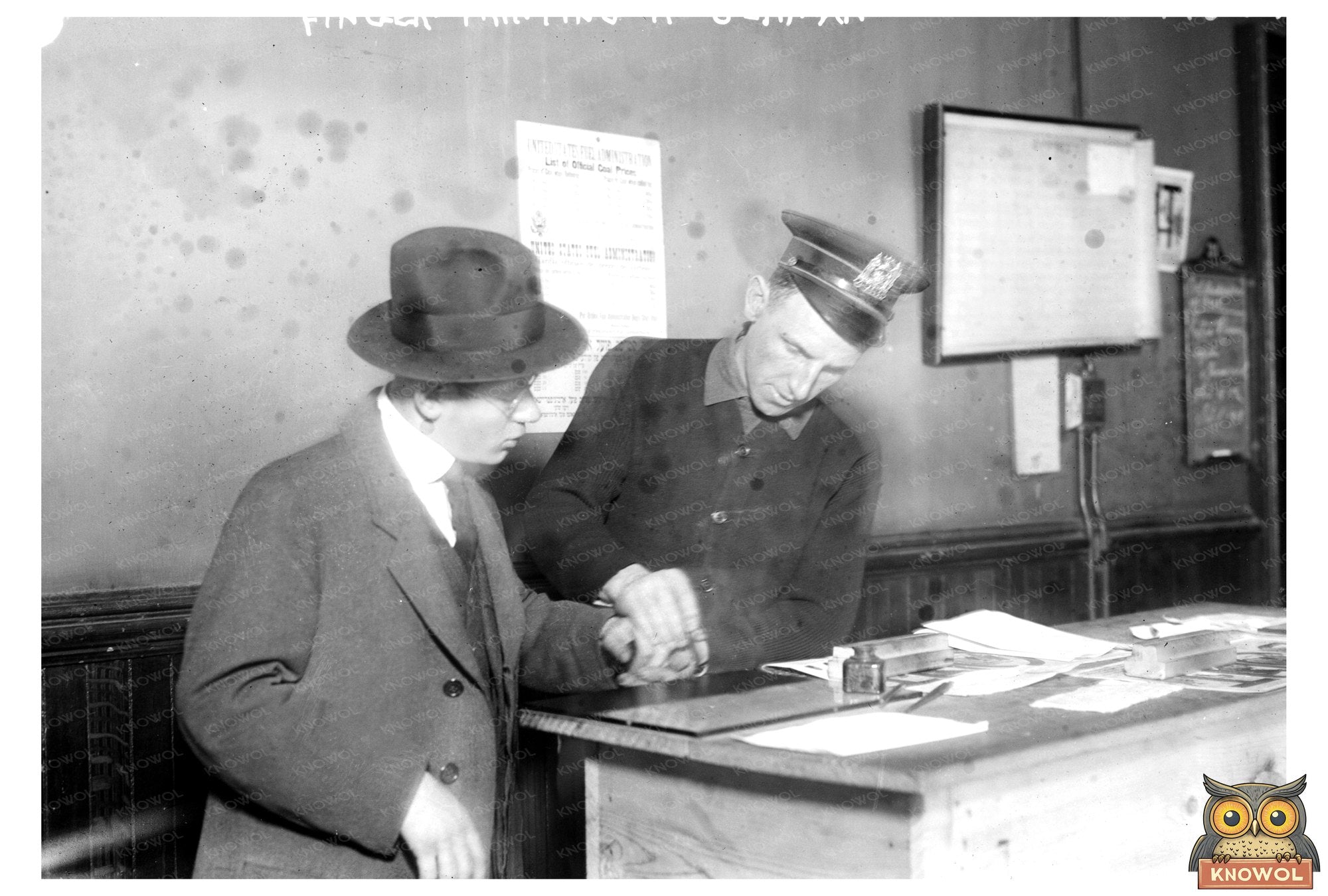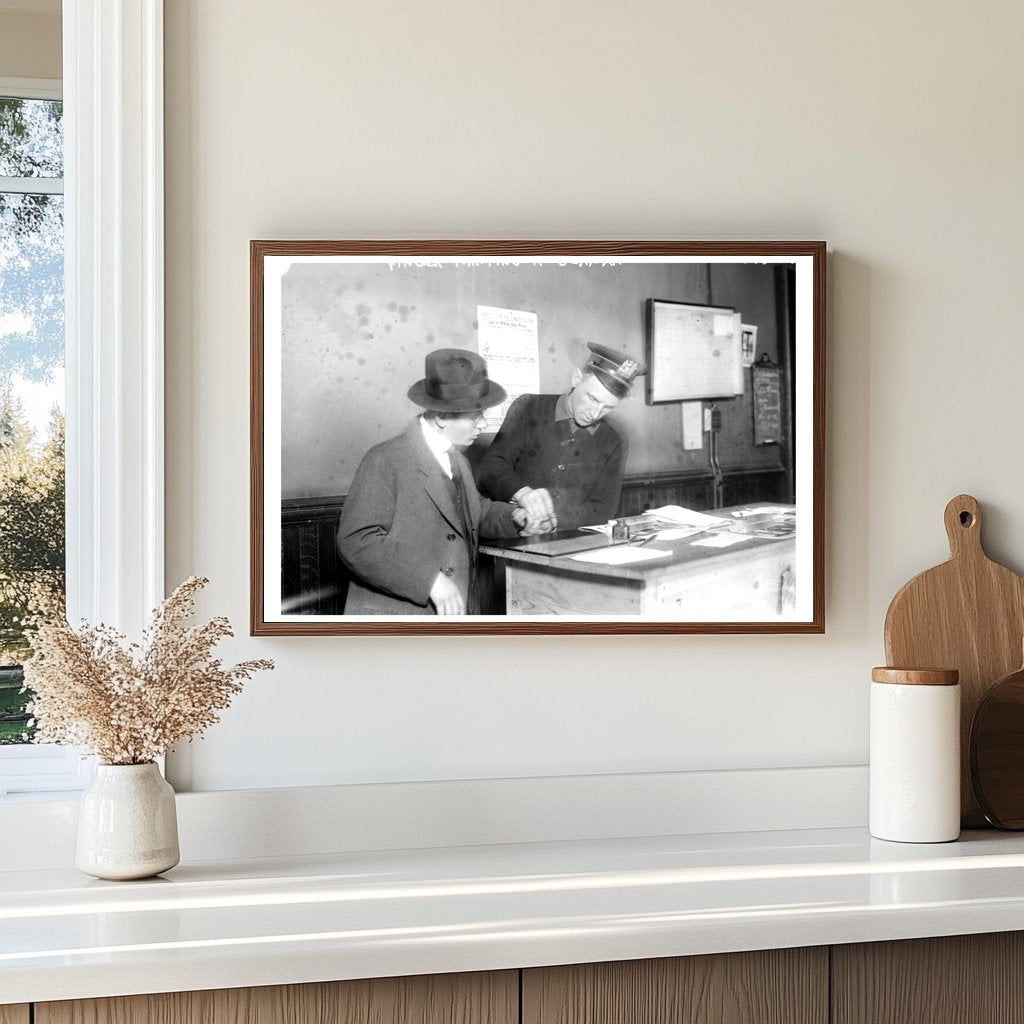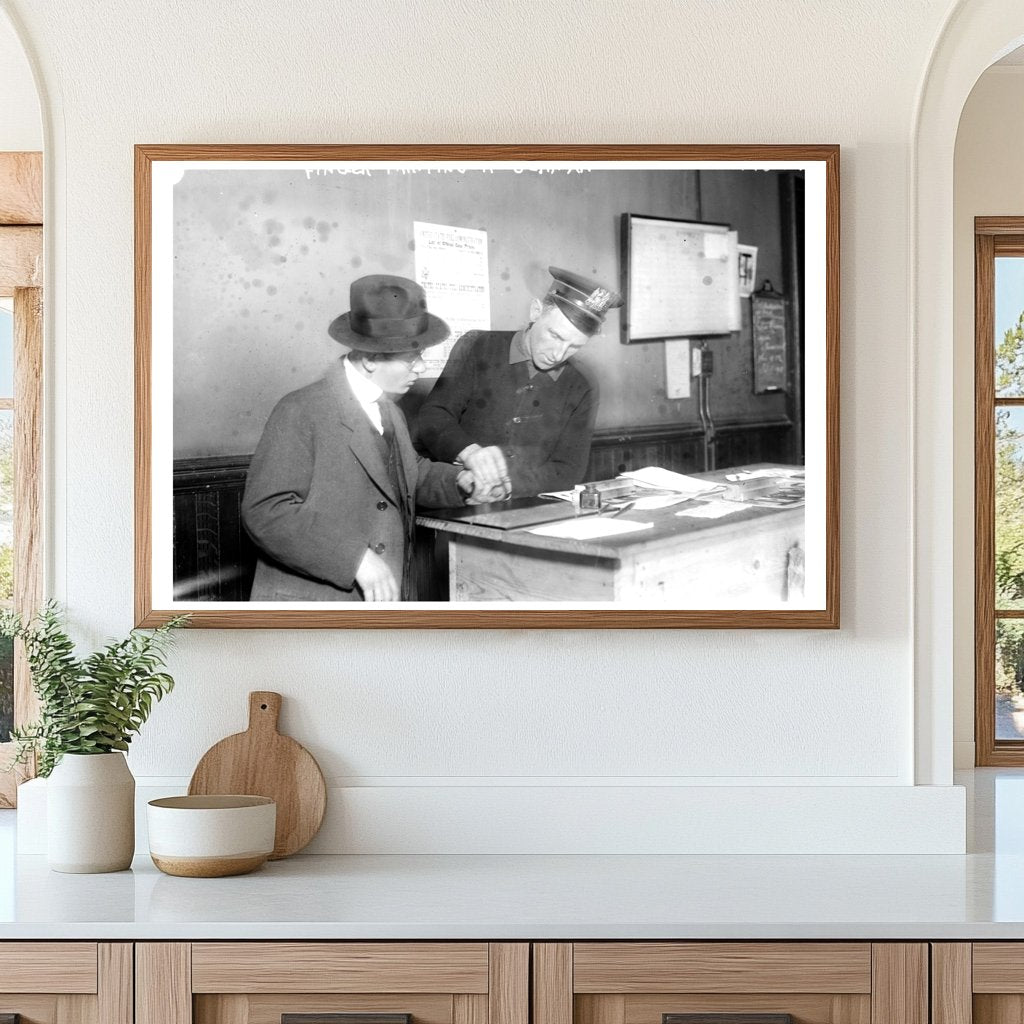


1917 NYC Police Fingerprinting German Suspect
This photograph captures a pivotal moment in law enforcement history, portraying New York City police as they fingerprint a German subject in 1917. This time period is significant, as it falls during World War I when national security concerns heightened due to the wars impact on American society. In 1917, concerns about espionage and sabotage led to intensified scrutiny of individuals with German backgrounds, reflecting the climate of suspicion and the government’s efforts to monitor potential threats.
Fingerprinting as a practice was still relatively new to policing in the early 20th century. Introduced to the United States in the late 19th century, it rapidly gained popularity as a reliable means of identification. The photo illustrates the procedural methods of the New York police, who were among the first agencies to adopt fingerprinting routinely. This moment not only highlights the advancement in forensic science but also shows how law enforcement adapted its techniques to address the challenges posed by wartime fears. The image serves as a visual record of a broader narrative about policing, identity, and societal tensions during a critical period in American history.

1917 NYC Police Fingerprinting German Suspect
